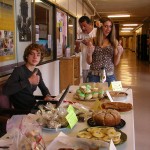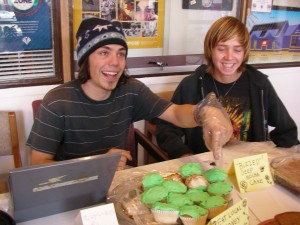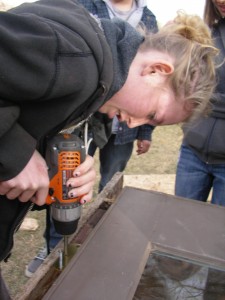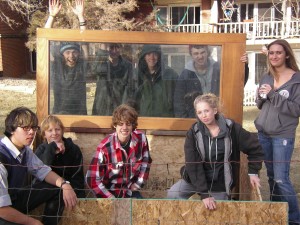

They started by educating themselves about what is happening to honey bees. They knew bees were disappearing at an alarming rate, but why? Colony Collapse Disorder (CCD) was at the heart of their research. This is a mysterious problem that causes bees to literally disappear. There are many theories about the causes, everything from pesticides to cell phone use, but there is no one answer. Students conducted research on the web, consulted with Growing Gardens and watched a documentary called “Vanishing of the Bees.” This all came to the same disquieting notion that human activities as a whole are negatively affecting the lives of honey bees! So what can be(e) done?

They found the most simple and pervasive solution, aside from learning the art of beekeeping and starting your own hive, is to support local hives. As they learned from many of their sources, “it’s not about one person with 60,000 hives, it’s about 60,000 people with one hive.” So they set about attracting attention with honey…That’s right, a bake sale! They raised money for their cold-frame and attention to the bees by selling baked goods at school and encouraging the use of local honey to support local bee keepers. It was quite a success and spurred their energy to create a cold-frame to aid in the attraction of bees to their pollinator garden at New Vista High School.

A cold-frame is basically a small green-house that is low to the ground that keeps off the frost on cooler days at the beginning and end of the growing season. It works by trapping the heat of the sun under a window or door that allows access to a small box which contains the plants and the heat. The cold-frame came together quickly with donated and repurposed materials from ReSource in Boulder and friends of students. Just over 6 feet long and 3 feet high, their cold-frame should shelter many starts this spring as they bring their pollinator garden back to life.
Students are hopeful that the local bees will continue to survive and provide pollination for their garden and honey for their hives and a few of their baked goods. The fruit of their labor tastes sweet!
Check out the sweet video the students put together about their project:
This article was written by Madeline Bachner and edited by Ford Church.

Leave a Reply